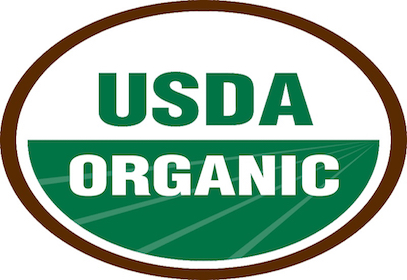
Should you get your Natural Cosmetics Organic Certified?
Advantages:
- Clearly shows your products contain organic ingredients
- Sets your natural products apart from others
- Be recognized and earn customer’s trust
- Can market to those who purchase organic cosmetics
Disadvantages
- It is costly. From applying, meeting requirements and maintaining certification.
- There are many regulations and rules to follow. You want to make sure your current products and future products will align and will fit these guidelines, otherwise it can restrict your business plans.
- Who are your customers? Are these customers actively looking for certified organic cosmetics? Will the disadvantages be worth it?
About Organic Certification
Who regulates the term, “Organic”
USDA regulates the term “organic” as it applies to agricultural products through its National Organic Program (NOP) regulation.
FDA does not define or regulate the term “organic,” as it applies to cosmetics, body care, or personal care products.
If a cosmetic, body care product or personal care product contains or is made up of agricultural ingredients, and can meet the USDA/NOP organic production, handling, processing and labeling standards, it maybe eligible to be certified.
There are 4 Organic Labeling Categories:
Once certified, cosmetics are eligible for the same 4 organic labeling categories.
You must meet all requirements to qualify for a label
100% Organic Label
- Product must contain (excluding water and salt) ONLY organically produced ingredients.
- Products may display the USDA Organic Seal and must display the certifying agent’s name and address.
Organic Label
- Product must contain at least 95 percent organically produced ingredients (excluding water and salt).
- Remaining product ingredients must consist of nonagricultural substances approved on the National List or non-organically produced agricultural products that are not available in organic form, also on the National List.
- Products may display the USDA Organic Seal and must display the certifying agent’s name and address.
Made with Organic Ingredients
- Products contain at least 70 percent organic ingredients
- Product label can list up to three of the organic ingredients or “food” groups on the principal display panel.
- Products may not display the USDA Organic Seal and must display the certifying agent’s name and address.
Made with less than 70% Organic ingredients:
- Products cannot use the term “organic” anywhere on the principal display panel.
- They may identify the specific ingredients that are USDA-certified as being organically produced on the ingredients statement on the information panel.
- Products may not display the USDA Organic Seal and may not display a certifying agent’s name and address. Water and salt are also excluded here.
Using the word Organic to Label
Overall, if you make a product and want to claim that it or its ingredients are organic, your final product needs to be certified. If you are not certified, you are not allowed to make any organic claim or use the USDA organic seal. You can however, on the information label, show the certified organic ingredients as organic and the percentage of organic ingredients.
Private Certifications
Cosmetics, hair care, skin care, and body care products, can be certified by private standards. These standards might include foreign organic standards, eco-labels, earth friendly, etc. USDA’s NOP does not regulate these labels at this time.
Learn how to formulate Organic Camellia Facial Cream in the Pro Skin Course
Sources:
https://www.ams.usda.gov/sites/default/files/media/Labeling%20Organic%20Products.pdf
https://www.fda.gov/cosmetics/cosmetics-labeling-claims/organic-cosmetics
You might also like

